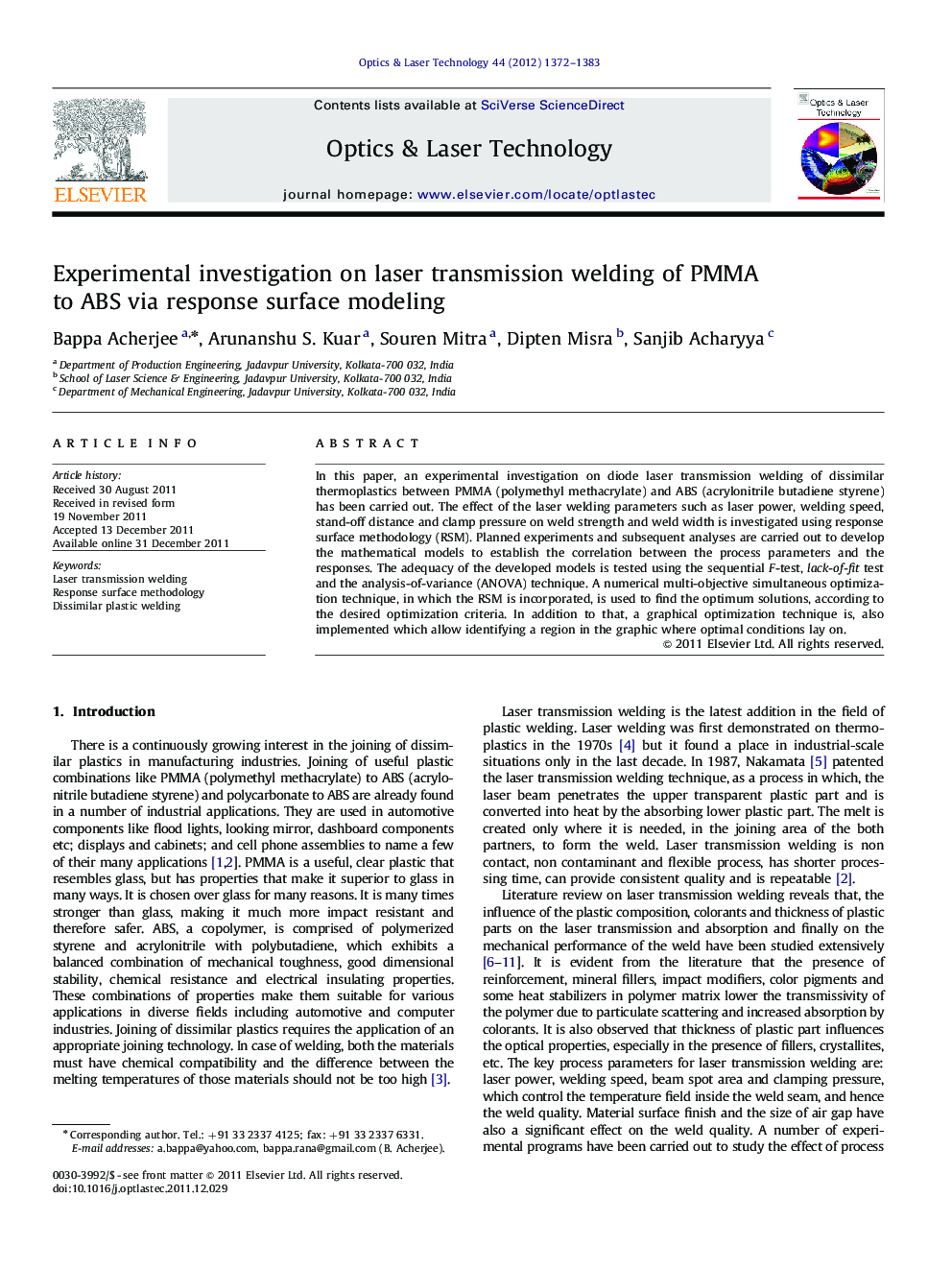| Article ID | Journal | Published Year | Pages | File Type |
|---|---|---|---|---|
| 739540 | Optics & Laser Technology | 2012 | 12 Pages |
In this paper, an experimental investigation on diode laser transmission welding of dissimilar thermoplastics between PMMA (polymethyl methacrylate) and ABS (acrylonitrile butadiene styrene) has been carried out. The effect of the laser welding parameters such as laser power, welding speed, stand-off distance and clamp pressure on weld strength and weld width is investigated using response surface methodology (RSM). Planned experiments and subsequent analyses are carried out to develop the mathematical models to establish the correlation between the process parameters and the responses. The adequacy of the developed models is tested using the sequential F-test, lack-of-fit test and the analysis-of-variance (ANOVA) technique. A numerical multi-objective simultaneous optimization technique, in which the RSM is incorporated, is used to find the optimum solutions, according to the desired optimization criteria. In addition to that, a graphical optimization technique is, also implemented which allow identifying a region in the graphic where optimal conditions lay on.
► Laser transmission welding of dissimilar thermoplastics between PMMA and ABS has been experimentally investigated. ► RSM is applied to the experimental data to relate the laser welding parameters with the responses. ► The effect of welding parameters on the responses is studied on the basis of the developed models. ► The mathematical models are further used to find optimum welding conditions to achieve the desired weld quality.
